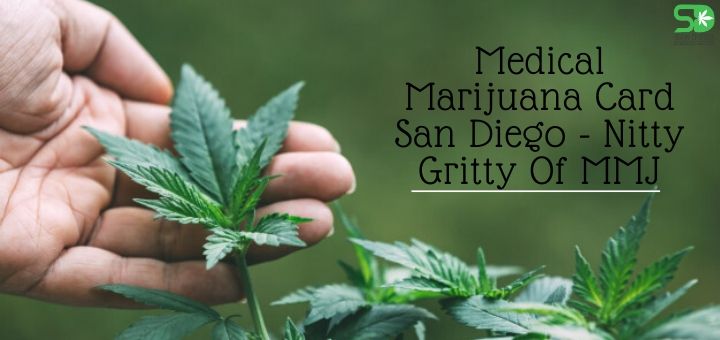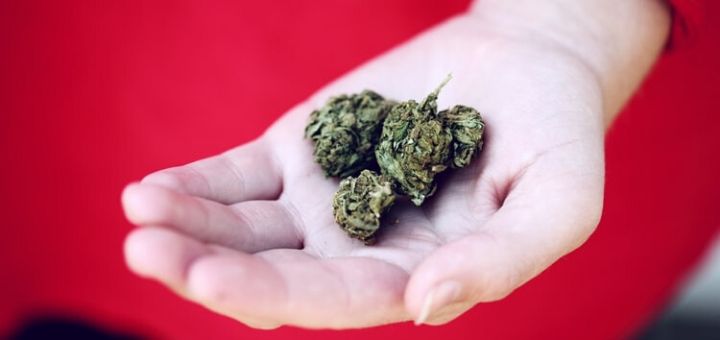During the entire quarantine phase, people started taking up new hobbies like painting, workouts, dancing and many others to keep themselves occupied. But for people who use cannabis, the new hobby was cooking homemade edibles. Cooking with cannabis has been around for a long time but interest in it grew specifically in the time of lockdown. Don’t worry if you missed the party, you can always start making edibles at home right now.
With a medical marijuana card in San Diego, you can visit any dispensary across the city and buy yourself a bag of good quality cannabis buds. The next step is to choose a recipe, get in the kitchen, wear your apron and start cooking.
Before you begin, remember that you may not succeed in your first try. Cooking cannabis edibles isn’t easy but it doesn’t have to be daunting either. So here are a few tips that will help you make a start in your cooking expedition.
Learn About The Strain You Will Use
Since you are basically beginning from scratch, the first step is to identify the strain you own or buy. Cannabis strains have varying chemical compositions which means that they will have different potencies as well. If you infuse your edible with cannabis without the knowledge of the strain type or chemical composition, you won’t be able to pinpoint the potency of your end product. For someone who uses cannabis for medical reasons, this uncertainty of potency can be risky. The level of THC and CBD content and type of terpene in your strain will help you decide the right dose for your edible.
When you are buying a strain for yourself, make sure that you are choosing one according to the effects you need. For example, if you want a strong euphoric high or sedative effects, go for high THC content. High CBD strains are more preferred by people who want the medicinal properties without a prevalent buzz.
You can always ask your budtender or seller at the dispensary to give you all the necessary details about the strain. It’s also best to do some research on your own on the internet. It will help you have a better idea about how to use cannabis and in what quantity.
Decarboxylation is Necessary
One important step that beginners often miss out on while cooking with cannabis is the decarboxylation process. Your cannabis edibles won’t work if you infuse it with raw cannabis. It will be similar to consuming cannabis tasting food that delivers no effects. This is because raw cannabis does not contain the important cannabinoids THC and CBD that are responsible for all the therapeutic benefits. These cannabinoids are present in the form of cannabinoid acids instead. While THCA and CBDA have their own medicinal properties, they will not deliver the same effects as you would after smoking a joint or eating a store bought edible.
This is why decarboxylation is necessary. Cannabis is exposed to heat so that the cannabinoid acids turn into cannabinoids. It is not a very tricky process. You can even do it at home using your oven or microwave. Just remember to keep an eye on the cannabis while it is being decarboxylated because higher heat exposure can burn the cannabis and make it useless.
On the other hand, if you are using cannabis oil or concentrates for your edibles, you don’t have to worry about the decarboxylation process.
Avoid Fine Grinding
You will have to grind your cannabis buds before using it in food. But there is a right and wrong way to do it.
The wrong way is grinding the cannabis too fine. Refrain yourself from grinding the buds in a food processor. An extra spin and the buds will turn into fine powder. It may sound like a good idea but you are only making the process harder. Because you are basically getting rid of the most important aspect of the buds- the trichomes. These are on the surface of the buds and not inside it. Also fine ground adds the chlorophyll into your food or infusion. It will make the end result turn a shade of green and even smell like a freshly mowed lawn. In addition to this, powdery cannabis buds become difficult to sift out from an infusion. The plant material will show up in every bite and ruin the taste.
The right way is to grind coarsely using a hand grinder. Once your buds are properly decarboxylated, grind it to a medium consistency and add it to your edible.
Make an Infusion
If you are confused about which recipe to begin with, try making an infusion. Start by choosing a good quality base. The quality matters because it will only enhance the experience of your infusion. Your base can be anything, butter, olive oil, coconut oil, milk etc. Try using one that you will use on a regular basis. For example, olive oil infusion can replace your regular cooking oil. This way, you can turn any meal into a dose.
Once you choose a base, find a recipe for your infusion. You can easily find one online but only stick to reliable sources. For example, Leafly has a great collection of infusion recipes. From cannabutter to cannabis infused honey, you can find it all.
When using cannabis infusions, make sure that you stir it continuously while cooking. Also, give it a stir before using because cannabis tends to settle at the bottom after some time.
Do a Potency Check
Remember, cooking with cannabis requires attention and careful measurements. Because dosing with edibles can be tricky. And when you are making one yourself, dosing can become a strenuous task. So do proper research, consult a professional or your doctor and then put on your chef’s hat to begin the process.
Even with the most experienced people, getting an accurate dose of cannabis can be difficult. So as a beginner, the best option is to start slow and then do a potency check. Consume your edible and give it some time to show effects. If it’s not enough you can adjust accordingly later.
Potency check is also important to avoid guesswork. If you own a medical marijuana card in San Diego, you must be advised by your doctor to consume only a specific dose of cannabis at a time. So before you finally use your edibles to dose on cannabis, do a potency check to avoid any unwanted situations.
Learn How To Use Raw Cannabis
If you are interested in exploring new areas with cannabis, try using it raw in your food. Cannabis has a high nutritional value. From dietary fiber and amino acids to vitamins and essential fatty acids, cannabis has it all. And let’s not forget about the cannabinoid acids THCA and CBDA. You can experience the benefits of each of these components by using raw cannabis.
Use the leaves or seeds in your regular salad. You can also convert it into a cold pressed juice or a smoothie with your favorite fruits and vegetables.
So, are you ready to take on a new hobby with homemade edibles? Great! Just remember to be responsible while cooking and using these edibles. It will take some time to perfect a recipe but until then go slow. And if you consider using it as a way of taking your daily dose, consult your doctor before you make a start.






